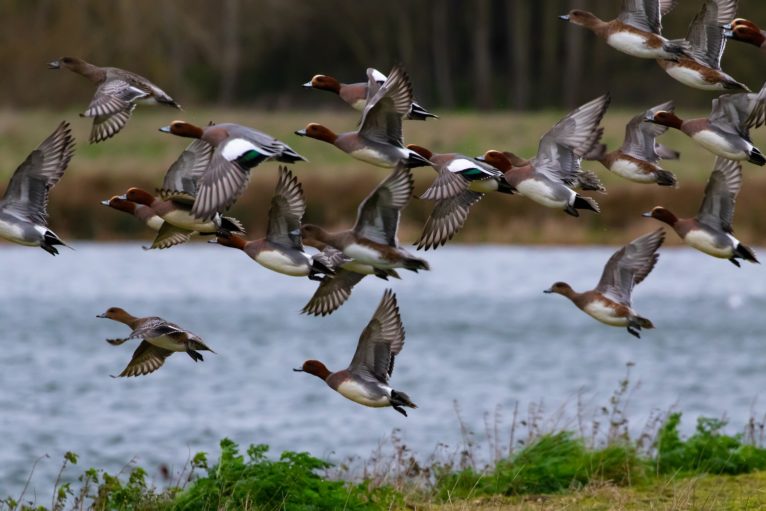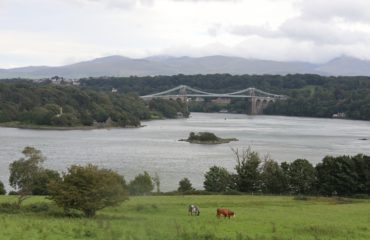Why Dynamic Alignment is Alive and Well: The story of lead shot and wetlands

Whether UK and EU negotiators would agree to include dynamic alignment in the UK-EU Trade and Cooperation Agreement (TCA) has been one of the major issues in Brexit negotiations for years. Until the very end, debates raged over whether the negotiators should agree a ratchet clause (existing EU-UK rules create a floor, which neither partner can undercut through deregulation and which increases if both partners have raised their standards) or dynamic alignment (a mechanism where both sides have to keep pace with improvement in environmental protection and social rights to continue trading freely with each other’s). Beyond these two options what mattered was how much bite these mechanisms would have in practice.
In the end, the TCA is thin on the environment, but it contains mechanisms for preventing environmental regression and encouraging the uptake of more ambitious rules by both parties. These mechanisms are limited to situations where divergence has a demonstrable material impact on trade and investment. For Greener UK, this means these mechanisms will have limited practical impact: ‘Providing proof of damaging economic impacts on the other party will be difficult and potentially a very protracted undertaking’. For others, such as the UK Trade Policy Observatory, it may actually constitute dynamic alignment ‘in disguise’.
But these debates on the specific provisions of the TCA risk missing the bigger picture: irrespective of the details of the TCA provisions on non-regression, dynamic alignment is here to stay. It will play out due to legal obligations in Northern Ireland, in policy areas included in the Protocol on Ireland and Northern Ireland which entered into force earlier this month. In these specific areas, Northern Ireland shall keep pace with EU developments.
It will also play out in a slightly different form in Scotland, through political commitments which have now been included in the UK Withdrawal from the European Union (Continuity) (Scotland) Bill, voted in December and awaiting royal assent later this month. This law means Scottish ministers have the power to keep pace with EU developments, across the breadth of the EU acquis, especially in areas of social or environmental protections. And, if at least one part of the UK keeps pace with the EU there are wider implications for the UK’s internal market, and scope for growing internal divergence, or calls for intra-UK dynamic alignment.
An early test case for dynamic alignment in practice, is the banning of lead shots in wetlands. A new Regulation effective from January 2023 bans the use and possession of lead shots in wetlands, and in a buffer zone of 100 meters around wetlands. It builds on the Ramsar Convention definition of wetlands which includes peatland.
The new Regulation, adopted to protect wild birds against lead poisoning amends an Annex of the EU’s REACH regulation (Registration, Evaluation, Authorisation and Restriction of Chemicals). REACH is one of the twenty areas of EU environmental legislation which are included in the Protocol on Ireland and Northern Ireland, meaning that Northern Ireland has to keep pace with EU amendments and revisions.
Where the story gets more complex is that the two parts of the UK that either have to (NI) or want to (Scotland) keep pace with EU developments…already ban the use of lead shots in wetlands. Indeed, a ban, in some form, is already in place in most EU member states, although critically not in Ireland or England and Wales (for England and Wales there is a different two-pronged ban, country-wide for certain species and limited to Special Sites of Scientific Interest for others).
Thus, this example illustrates the messiness of the divergence/alignment debate in practice: it is an example of both intra-UK and intra-EU divergence. It is also an example where Northern Ireland has more ambitious rules than Ireland.
What is likely to happen next? The new regulation will harmonise rules across the EU and will force Northern Ireland to update and toughen its pre-existing ban. The 2009 NI regulations uses a narrower definition of wetlands than the new EU Regulation – it covers only peatlands with visible water are to be whereas the EU Rules have much wider scope (all peatlands). Similarly, the 100m buffer, and the banning of not only the use but the possession of lead shot in these areas will need to be incorporated.
What about Scotland? The Scottish ban dates back to 2004. As with the NI regulation, it includes only a subset of peatlands in its definition of wetlands, does not have a buffer zone and only bans use, not possession of lead shot. As such this case falls under the Scottish Continuity Bill – Scottish ministers have the power to adopt regulations to keep pace with EU developments on this area as it would advance standards in relation to environmental protection. But will they? Will it be considered politically more important to show that Scotland is keeping pace with the EU or to avoid further raising the hackles of the shooting lobby? Tensions between the Scottish government and shooting industry are already high, with plans for grouse shooting licence in response to raptor persecution.
This lead shot in Wetland case shows that dynamic alignment is alive and well. The UK-EU Trade Agreement may contain a thin, ‘defensive’ form of dynamic alignment, but the TCA is only part of the story. This case shows how dynamic alignment depends on different moving parts: the Protocol, Scottish (and indeed Welsh) political commitments to keeping pace, to which we may add in other areas the working of the UK Internal Market as well as the TCA. Furthermore, alignment is likely to be messy: after decades of policy making in the environmental field alignment will be about updating existing diverging rules much more than adopting brand new rules to tackle new problems – even in areas where common EU rules existed, flexibility in implementation means that specific content and scope of rule on the ground in the four nations may differ. Finally, it will be highly political. This case shows how in parts of the UK such as Scotland where alignment is optional, every instance of alignment may end up being contested.
About the author
Dr Viviane Gravey is a Lecturer in European Politics at Queen’s University
Belfast and Co-chair of the Brexit & Environment network.
Image by TheOtherKev from Pixabay




